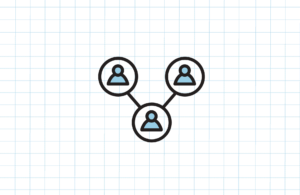The steps to content planning
Content planning for your website is very similar to content planning for social media. There are a series of steps to think through and complete in order to create engaging, goal-driven content.
I have created 4 quick steps that you should go through for your website as a whole, then each page on your website as you develop your website content.
- What goal are you trying to achieve?
- Who is your target audience?
- Where is your audience in the buyer’s journey?
- How do you determine if your content is working?
Why does content planning matter?
Your website is the hub of your digital marketing efforts. Ideally, your website will be referenced on traditional marketing communications, digital ads, radio ads and television, and social media. Everything leads back to the website as a conversion tool. You should use this to your advantage.
What are my goals for content planning?
Do you want to inform your audience about a new product?
Do you want to raise brand awareness?
Do you want to encourage sign-ups?
All of these goals have different strategies to ensure your website is working for you. You should never focus on more than 1-2 goals per page. You lose people with too many calls-to-action.
If you are trying to raise brand awareness, SEO-optimized educational content is best. Tell them what you want them to know about you, and make sure you are focusing on your brand’s keywords. Use the same language and tone throughout your marketing, and pick topics that pertain to your industry.
If you are trying to obtain information, make sure your contact form is clean and direct. Don’t ask unnecessary questions, and don’t make it difficult to find on the page. It should be available on mobile and desktop. Most importantly, you still need text content on your form pages. The search engines need to understand what your form is trying to do, so it can show it to your customers!
The trick is to think about what your goal is, and build your content around that goal. Do not lose sight of it and fill the website with empty words for the sake of meeting an SEO limit.
Who is your target audience?
Speak to them directly. This sounds odd, but the more personalized you can get about your buyer, the more you are likely to get interest. Have you ever wondered how your social media pages know what style clothes you are interested in buying? This is a similar concept. It is alot easier to understand your audience when you know who they are.
Where is your audience in your buyer’s journey?
Knowing where and when your audience gets to your website is important. It involves planning content around your other marketing efforts. For example, if you have a QR code on a flyer at an event and it is going to lead them to a contact form, you do not want them to land on a generic form. You want to make sure you complete the “circle” or “journey” they started from the QR code. This helps you determine whether you need a landing page, a generic page about an event, or simply a blog post. Keep it organized, and make sure your marketing strategy makes sense from external marketing efforts to website content and completion! Closing the gap is also important.
How do you determine if your content is working?
If you haven’t already figured out that analytics are SO important to marketing strategy, I’m going to tell you again. Analytics ARE SO IMPORTANT. You have to know what works and what doesn’t. If you have a page on your website that no one ever clicks on, get rid of it. It’s just taking space. Use google analytics to determine how people are navigation through your pages, how many people are reading your blog, and how many people are converting on your forms. Where is your traffic coming from? Social? Maybe make it easier to share.
You have to make sure you are creating engaging content through tracking and analytics.
Contact Us to start planning content today.

